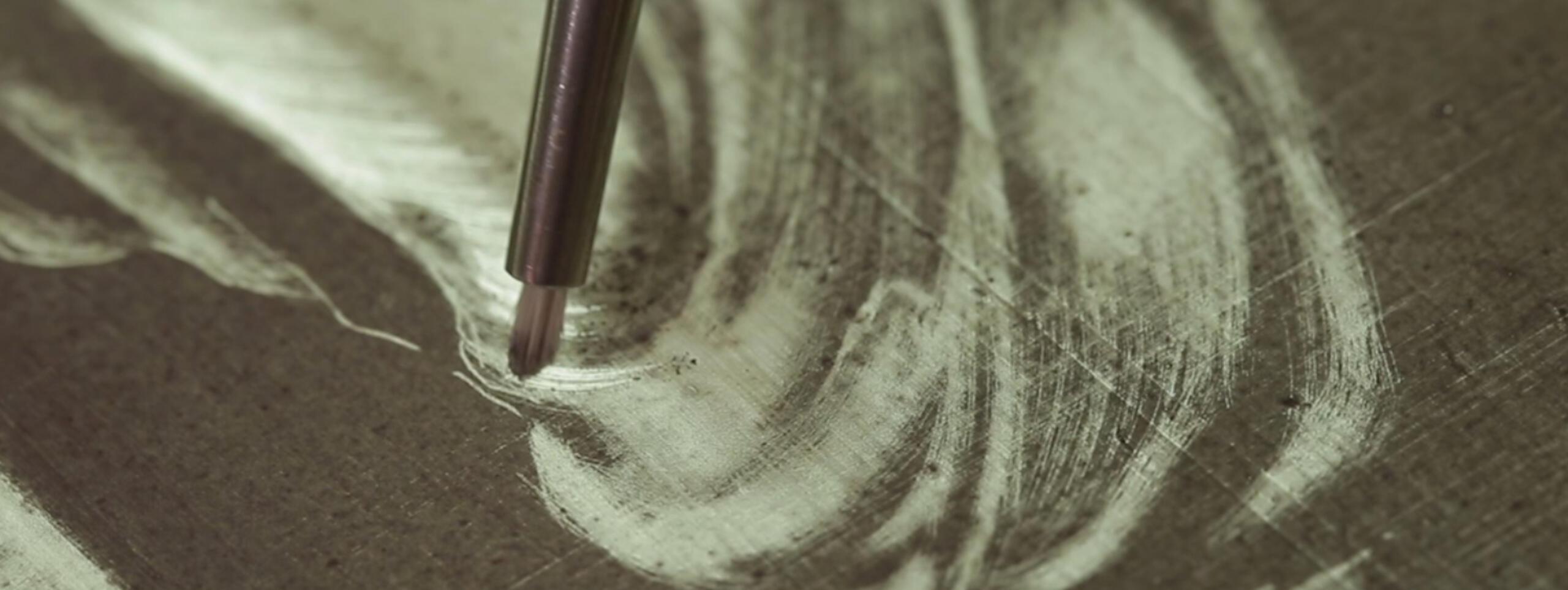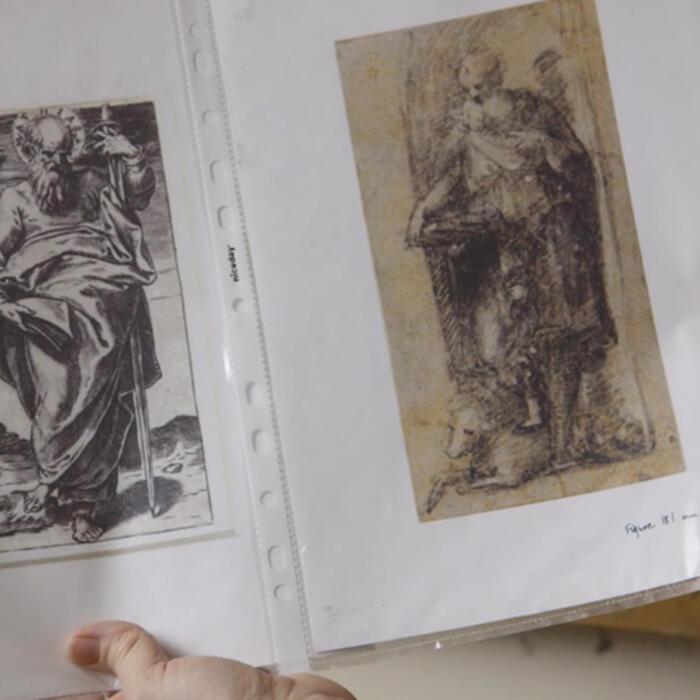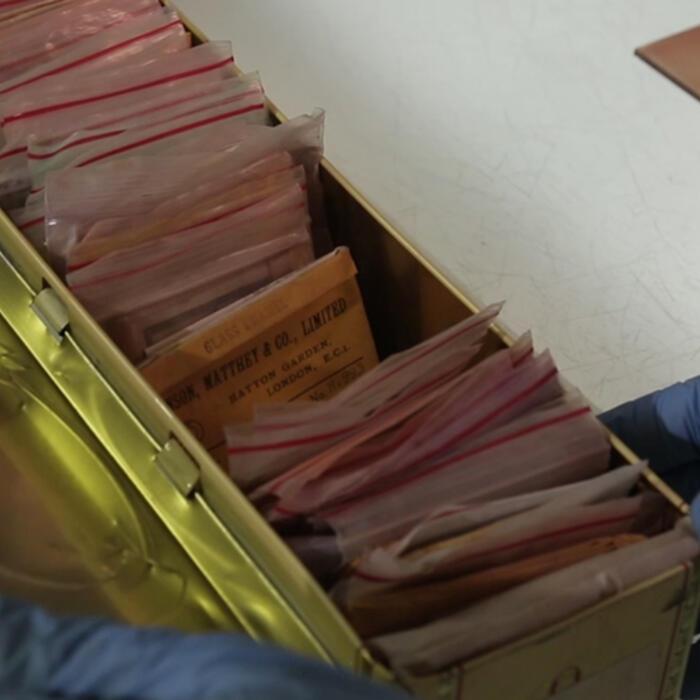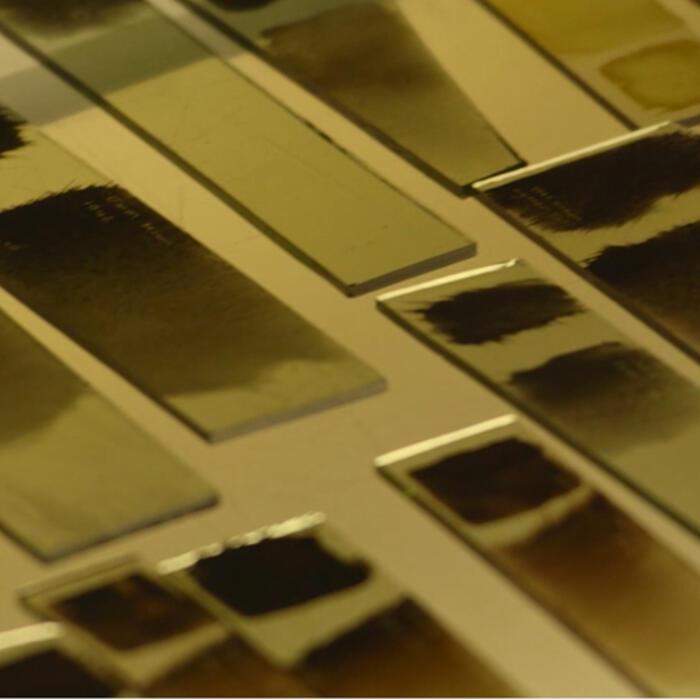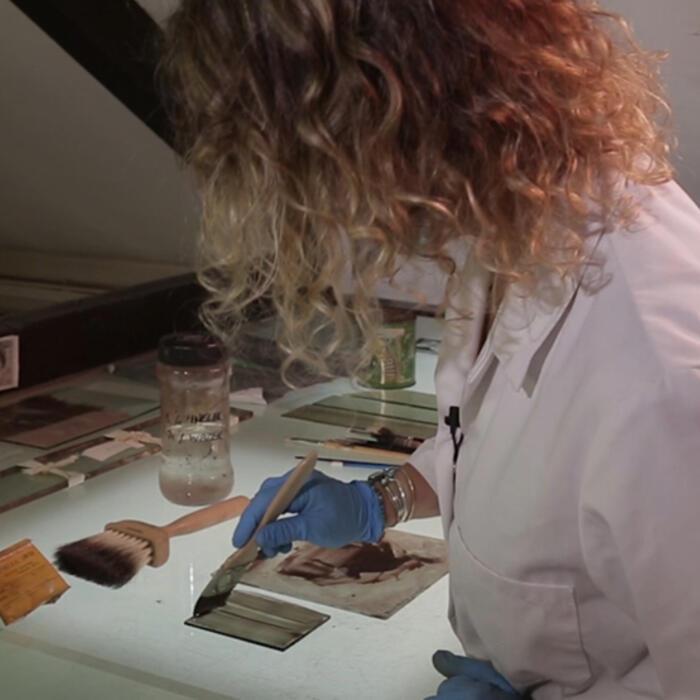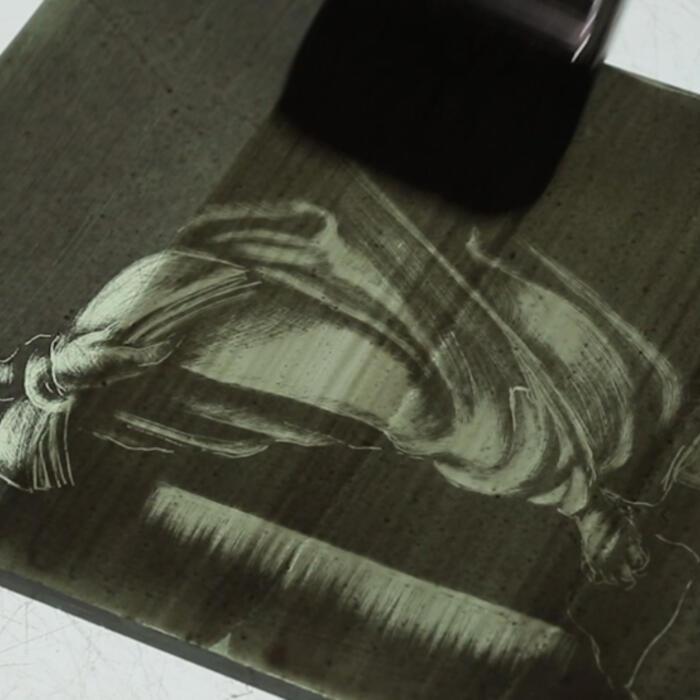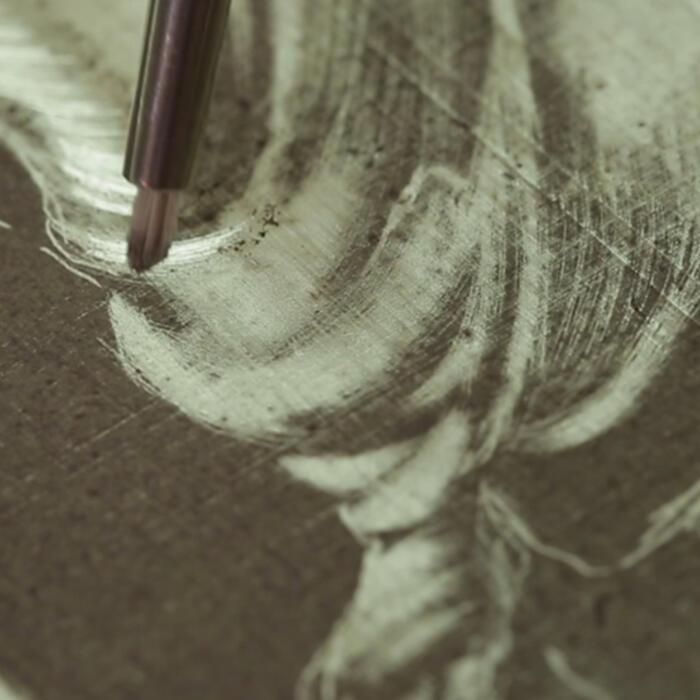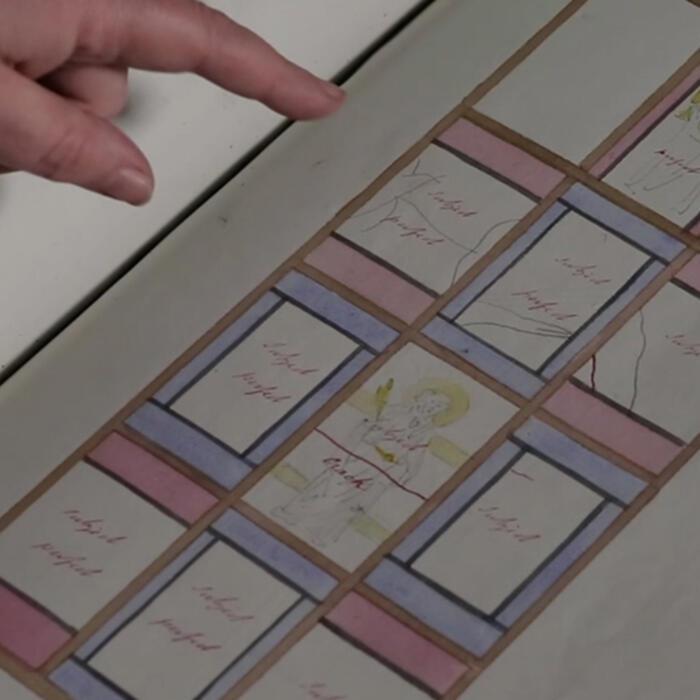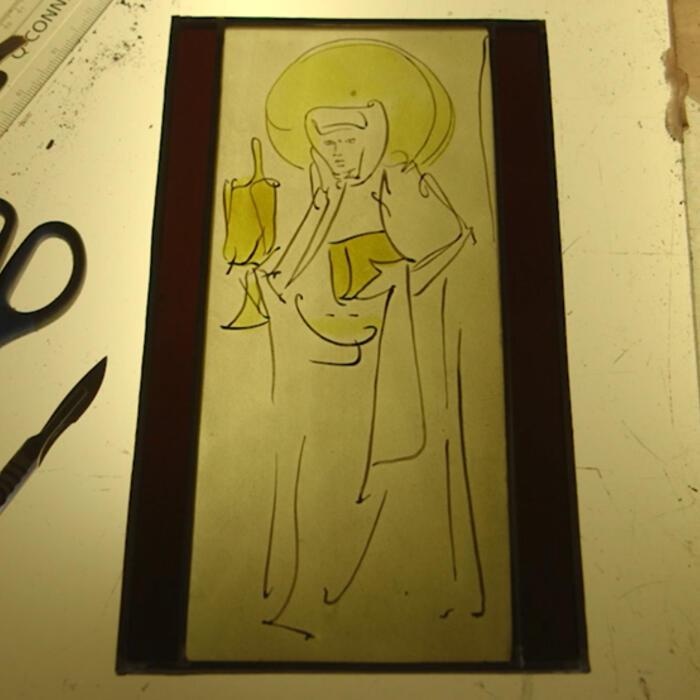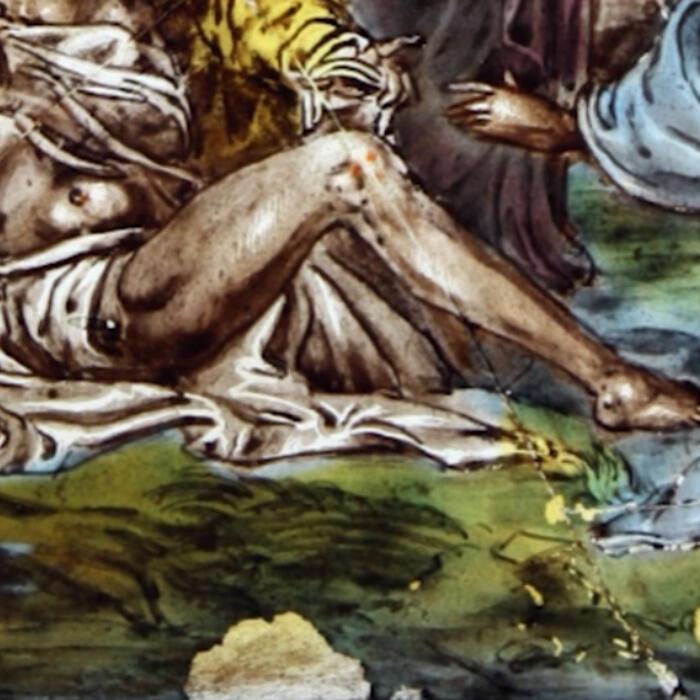The restoration of stained-glass panels originally in the sash window of the Shakespeare Recess, and the recreation of lost panels, was carried out by Rachel Helleur, Head of Conservation and Designer at Chapel Studio.
The original arrangement of glass was removed in the 1890s and six of the panels do not survive. Restoring the panels involved recreating lost subjects recorded in watercolours, engravings and an inventory in the 1830s, and restoring the existing glass.
Beginning the project Back to top
In the first part of this film we see Rachel working on the recreation of two missing panels from a set of four Saints, each a single figure standing in a niche. The two surviving panels (St Andrew and St Paul: German(?) 17th century) provided Laura with the evidence she needed to match pigments and painting techniques precisely. Fortunately, the missing subjects were recorded in 1907 as St John the Baptist and St Matthias. The Museum worked with stained glass specialist Dr Michael Peover to identify 17th century drawings and engravings depicting the same saints, on which Rachel could base the details of her new figures. Only once her finished drawings had been approved could the manufacturing process begin.
Choosing the materials Back to top
The new panels were painted on P1 restoration glass, chosen because its colour and soft distortion matched that of the original glass. Pigments were selected from Chapel studio own large and rare collection, assembled over 40 years, and mixed to match the original sepia colours. Rachel produced numerous samples – each of which had to be carefully prepared, applied to glass and kiln fired - before selecting the exact colours to be used in the creation of the new panels.
Recreating the stained glass panels Back to top
The film highlights the skill involved in this work, beginning with the application of the first colour ‘matt’ (of three) to the glass. Rachel first carefully grinds the pigment on a palette to a very smooth powder before mixing it to a smooth consistency with vinegar (ascetic acid) and applying it evenly to the glass panel using a badger-hair brush.
Once the matt has dried, the glass is placed over the design drawing (which serves a template) and Rachel begins etching away the matt colour to begin the process of re-creating the figure. Once the first elements of the design are completed a second colour matt is applied – this time mixed with water so that it can be worked without softening or destroying the first one beneath. Once this is dry, further details of the design are added. A third layer of colour, this time mixed in oil, is applied to highlight the darker areas – without affecting the two earlier layers.
Finally, the panel is fired at high temperature in the kiln. Once she completes the work and all four panels are glazed into the window it is hard to distinguish without looking closely which two saints are new and which are the 17th century originals.
Missing panels Back to top
Rachel also recreated two further panels, for which there were no originals to work from, by copying the watercolour record drawing of them in Soane’s inventory diagram – which is the only detailed evidence of their appearance that survives. The film shows her work on the figure thought to be St Clare. The finished effect is of a kind of ‘ghost’ panel – a shadow of its original self but the most honest way of including what we know of it in the recreated window.
Restoring existing panels Back to top
Chapel studio also restored the surviving panels of 16th and 17th century glass for this window and the film shows the painstaking work required where a distinctive green colour has been lost from the lower edge of a panel of the Raising of Lazarus painted in enamel colours over yellow stain. The enamel paint has gone but the yellow stain is still present.
In order to avoid adding modern paint to the original panel a glass backplate is placed behind it, on which a small patch of blue enamel has been painted in the correct consistency in precisely the right position. When the two panes are sandwiched together, the lost colour is restored as blue and yellow combine to reproduce the missing green.
Rachel and her colleagues at Chapel studio are among a small number of specialists in Britain capable of reproducing and restoring historic stained and painted glass so beautifully. Find out more about Chapel Studio at www.chapelstudio.co.uk.
